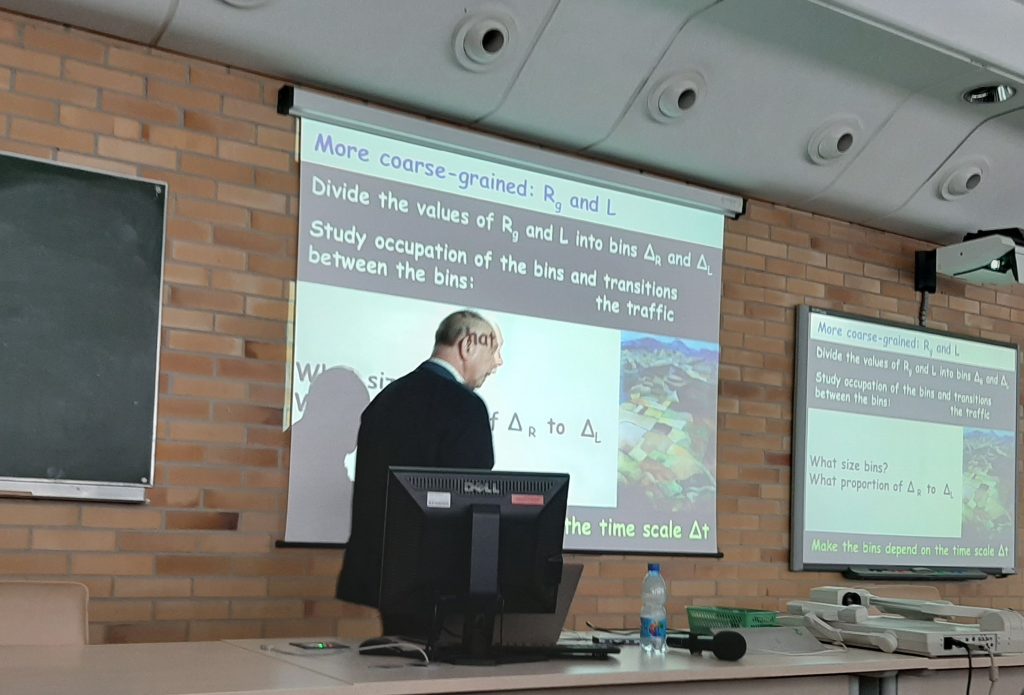
- This event has passed.
Dynamics of the intrinsically disordered proteins and neurodegeneration
February 12 , 13:00 – 14:00
Speaker: Prof. Marek Cieplak
Affiliation: Institute of Physics, Polish Academy of Sciences, Warsaw, Poland
The equilibrium dynamics of the intrinsically disordered proteins is thought to consist of transitions between many basins in the free energy landscape whereas structured proteins stay in the vicinity of one native basin. We demonstrate this picture explicitly by studying networks defined on the discretized plane: conformational end-to-end distances vs. radii of gyration. The bin sizes are defined by time scales that span orders of magnitude. The networks, derived from all-atom and coarse-grained molecular dynamics simulations, are nearly scale invariant. The bin representation also provides insights into the folding process of the structured proteins and identifies regions that hinder folding. Intrinsically disordered proteins often lead to neurodegenerative diseases through a variety of mechanisms. Here, we focus on one such mechanism: jamming of the proteasomal protein degradation by transient conformations that contain knots. We show that such conformations arise at least for sufficiently long polyglutamine tracts and α-synuclein. The polyglutamine tracts are fused within huntingtin protein that is associated with the Huntington neurodegenerative disease. We show that the presence of knots in the tracts obstructs translocation through a model proteasome, especially when the knots are deep. The knots in polyglutamine may form in tracts that exceed about 40 residues. This fact explains the existence of a similarly sized length threshold above which there is an experimentally observed toxicity at the monomeric level. We also discuss emergence of knots in α-synuclein – the protein associated with the Parkinson disease. We show that these knots are either shallow or deep and last for about 3 – 5 µs, as inferred from an all-atom explicit-solvent 20 and 30 µs trajectories. We argue that their presence enhances aggregation of α-synucleins.
In collaboration with: M. Chwastyk, Ł. Mioduszewski, B. de Aquino, A. Gomez-Sicilia, M. Carrion-Vazquez, P. Robustelli, and Y. Zhao.
Seminar language: English
Chairman: Michał Banaszak

Theme by Themesmob
